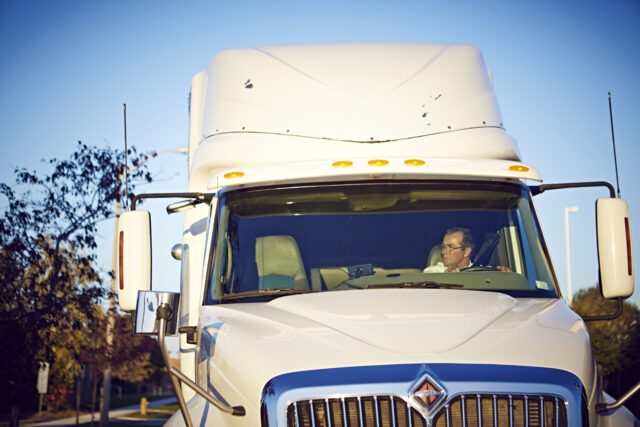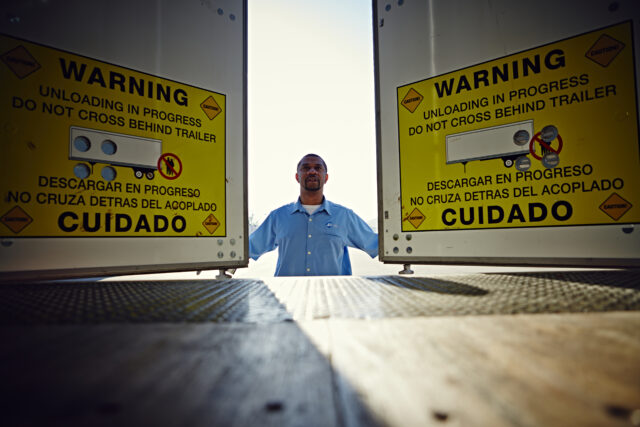

Tips for Staying Safe During Civil Unrest and Hijacking Situations
Road traffic crashes are not the only hazards truck drivers face. Civil unrest as well as hijacking and cargo theft can also pose threats to their safety. To ensure that drivers who find themselves in these situations can protect themselves, CPC Director of Safety Isaac Harmon shares the below tips.

Civil Unrest

Protests—both peaceful and violent—are common in the United States. Truck drivers who encounter them must take proper precautions. According to Harmon, the best thing to do is steer clear of areas of civil unrest altogether and try to find an alternate route. If avoidance is not possible, they should take these steps to remain safe:
- Stay in your truck.
- Keep your doors locked.
- Crack your windows and turn off the ventilation system. Windows that are down a half inch are more difficult to break than those that are completely closed. Turning off the ventilation system can help prevent smoke or teargas from entering the cab.
- Avoid any interactions with protesters, and do not do anything to provoke them.
- Keep your dashcam on or use your cell phone camera to document your surroundings. “The devices in many of our cabs are equipped with a panic feature,” Harmon said. “Drivers who are able should activate the panic feature to alert their managers. It will also automatically record and upload video footage, which can be helpful for law enforcement investigating the situation and for insurance purposes.”
- Call customers in areas where protests are occurring ahead of time to determine what to do, where to go, and when to safely make your delivery.
- Remain in contact with your managers and dispatchers. They can provide travel updates, gather information about conditions near delivery locations, plan for road closures, and more.
- Call 911 immediately if you feel you are in danger or there is an emergency that needs to be reported.
More recommendations from the American Trucking Association for drivers entering areas of civil unrest can be found here.
Hijacking and Cargo Theft
Hijackings and cargo theft are among the most dangerous scenarios truck drivers can experience. Fortunately, maintaining situational awareness can help prevent them from occurring.
“It’s important to always be aware of your surroundings and any potential hazards or threats,” Harmon said. “Pay attention to the objects and people around you and what they are doing. Does anything appear out of the ordinary?”
According to Harmon, drivers should practice situational awareness at every stage of the delivery process, including:
- Before the trip.
- Conduct a thorough pre-trip inspection, making sure your locks and windows are in operating condition.
- On the road.
- Raise your passenger window and keep your doors locked.
- Be alert of your truck’s vulnerability while at red lights, stop signs, railroad crossings, crosswalks, and on one-lane roads. “A person might stop their car directly in front of you to box you in,” Harmon said. “Leave plenty of room between your truck and the car ahead of you to give yourself an out in case of a hijacking.”
- If possible, stay on well-lit streets.
- Be aware of any vehicles that appear to be following you, especially near delivery locations.
- At delivery locations:
- Be alert to anyone observing deliveries.
- Make note of any suspicious vehicles and report them to law enforcement.
- Do not open the trailer before store personnel are present. “This prevents drivers from being alone with an open trailer in a place where it is easier for people to access or steal the product,” Harmon said.
- Keep the cab locked and remain aware of your surroundings while you are working inside the trailer.
- Report offers to purchase product to supervisors. “During the COVID-19 pandemic, it was especially common for people to approach drivers and offer to buy their loads,” Harmon said. “The best thing to do in those situations is to politely decline and tell the individual they will have to go inside the store to make any purchases.”
- When the delivery is complete, lock and secure the trailer and walk around the truck to make sure no one is hiding near or around it.
- Other precautions:
- Park in well-lit areas.
- Any time you take a break or leave your truck, make sure it is properly locked and secured.
- Do not discuss product type or delivery operations with strangers.
Prevention is important, but drivers also need to know what to do in the event of a hijacking or cargo theft:
- Do not panic.
- Do not attempt to resist the hijacker.
- Make mental notes of the situation, including:
- Time and location of the hijacking.
- A physical description of the hijacker, including the clothing and accessories they are wearing and any unique features, including speech characteristics, scars, tattoos and piercings. “The more details you are able to capture, the more you will be able to help authorities identify the culprit,” Harmon said.
- Information about the attacker’s vehicle, such as the license plate number, color, make, model, and year as well as any damage or personal decorations like bumper stickers.
- Upon release, notify law enforcement and dispatch.
Harmon said that when drivers encounter a civil unrest or hijacking situation, they must remember that their equipment and product can be replaced, but they are essential.
“Our people are our most important asset,” Harmon said. “Our priority is ensuring their safety.”


